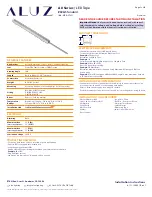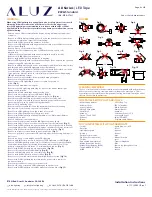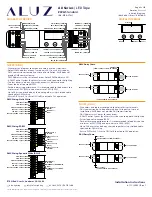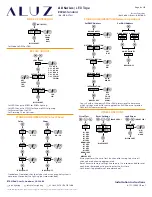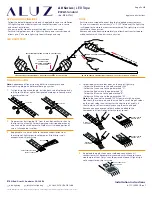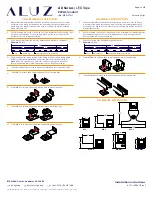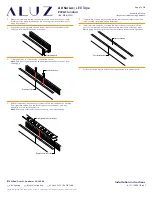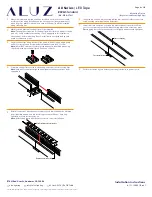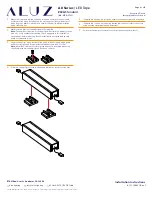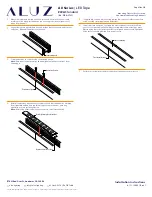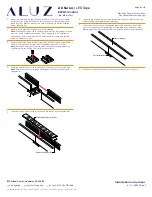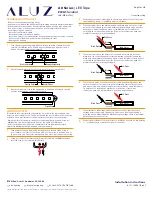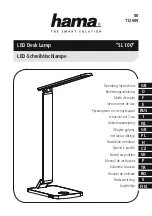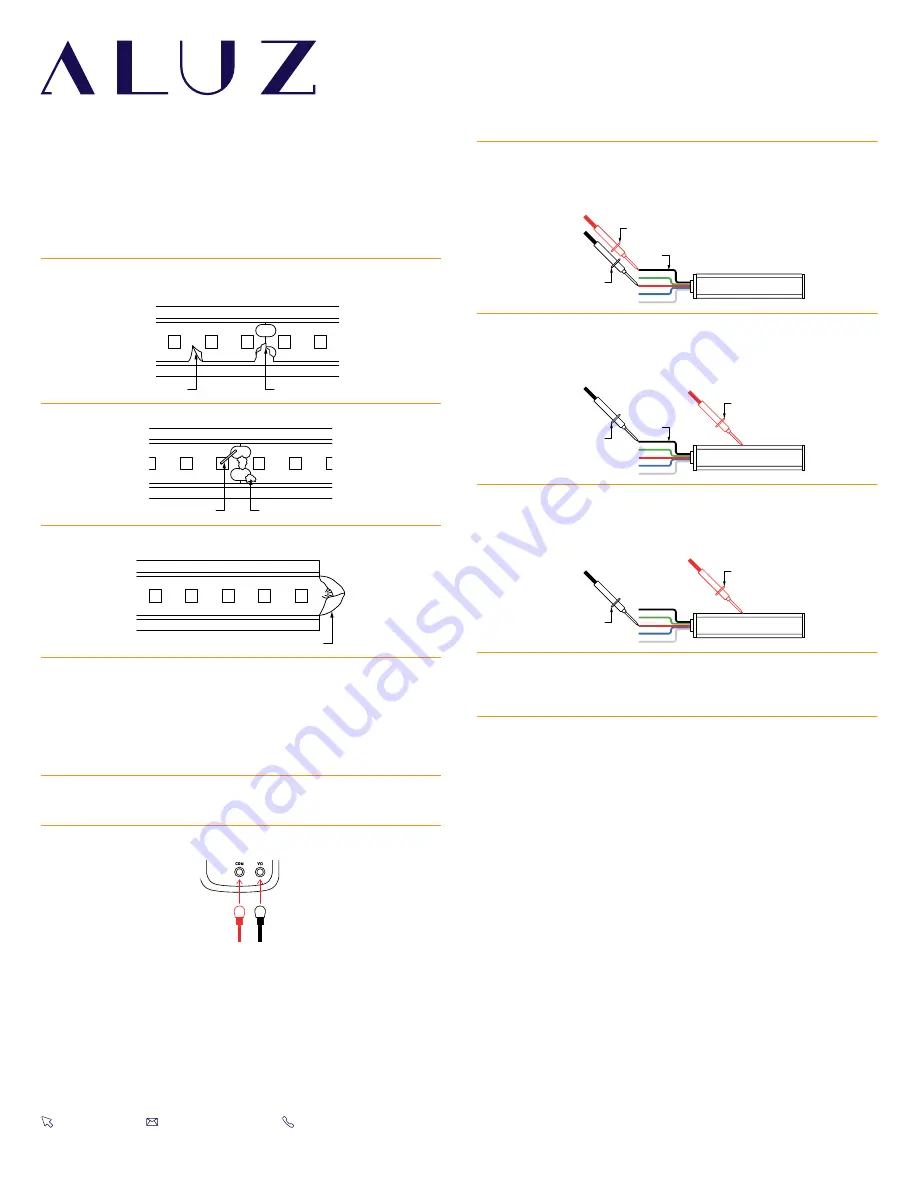
Installation Instructions
4 / 11 / 2022 / Rev 1
1170 N Red Gum St, Anaheim, CA 92806
© ALUZ All Rights Reserved. ALUZ reserves the right to make changes or withdraw specifi cations without prior notice.
info@aluz.lighting
aluz.lighting
866.ALUZ.LTG | 714.535.7900
A8 Series
|
LED Tape
ZIZA
Standard
(A8-ZIZA-STN)
Page 12 of 12
Troubleshooting
Black Probe
RGBW Lighting
Red Probe
Frayed End
Damaged Lightstrip
Torn Lightstrip
TROUBLESHOOTING TIPS
• Do not reset the breaker multiple times
• If the unit is overloaded, the breaker will trip, shutting off the transformer and lights
• If the breaker reset button has been held down by hand or any type of pressure,
such as duct tape, or if the breaker has been reset multiple times without
troubleshooting, the unit will:
- Burn the transformer bobbin
- Burn the thermal or magnetic breaker
- Burn the primary or secondary wires due to high amperage caused by overload
- Short circuit in line which will not allow the breaker to reset
- Damage the lighting
CONTINUITY TEST
A continuity test is performed to determine if electricity can pass through two
points on an electrical circuit. This helps identify shorts or malfunctions in the line
or fi xture. Use a multimeter or continuity tester to perform the steps below.
• Always perform a continuity test before connecting lighting to power source.
• Malfunctions are not always as obvious as the lights not turning on.
• A short or malfunction in the line or fi xture will cause damage over time,
ultimately damaging the lighting and voiding warranty.
1
Turn off power before beginning. Check for any twisting or damage to the
circuit in the LED lightstrip. If there is excessive damage and the circuit is
broken, the lightstrip must be replaced.
2
Check for metal particles or other foreign objects causing the short.
3
Check to make sure cuts in the lightstrip are clean and not frayed, causing
positive and negative copper pads to touch.
1
Turn power off before beginning. Verify power is turned off by using a
non-contact circuit tester. Touch the probe of the tester to positive wire of
the power source. The tester will light up if an electrical current is detected.
2
Setup your tester. First insert the black probe lead into the COM jack, then
insert the red probe lead into the V
Ω
jack.
Metal Flakes
Foreign Object
1
2
(-)
(+)
Black Probe
Red Probe
V
AC
Black
Black Probe
Red Probe
RGBW Lighting
Black
Black Probe
RGBW Lighting
Red Probe
3
Verify that your tester is functional by touching probes together. The tester
should light up, beep, or read 0
Ω
(ohms) of resistance.
4
Touch the red probe to the black wire and the black probe to each colored
wire. If a conductive path is formed between the black wire and any other
wire, the multimeter will beep, flash, or read 0
Ω
(ohms). Troubleshoot
to identify the malfunction in the line. If there is no conductive path, the
multimeter will not show any feedback.
5
Touch the red probe to the fi xture extrusion and the black probe to the
black wire. If a conductive path is formed between the extrusion and the
black wire, the multimeter will beep, flash, or read 0
Ω
(ohms). Troubleshoot
to identify the malfunction in the line. If there is no conductive path, the
multimeter will not show any feedback.
6
Touch the red probe to the fi xture extrusion and the black probe to the
each colored wire. If a conductive path is formed between the extrusion
and any colored wire, the multimeter will beep, flash, or read 0
Ω
(ohms).
Troubleshoot to identify the malfunction in the line. If there is no
conductive path, the multimeter will not show any feedback.
7
Set voltmeter to DC voltage and test power source. Confi rm the correct
voltage before connecting lighting to power source. If voltage reading is
more than 1 volt higher than the marked output voltage, there is a problem
with the power source or driver.
8
Connect power connector to power source. If LEDs do not turn on, flip polarity
(+ -) or power source connection to power connector.

